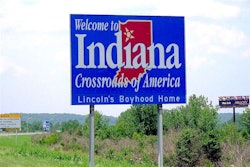
“Preservation of high-traffic volume roadways is just as important as for low traffic volume roadways,” says Jim Moulthrop, executive director of FP2, formerly the Foundation for Pavement Preservation. “States have limited resources, and preservation makes those resources go farther.”
Pavement preservation methods prolong pavement life, avoiding high future costs of reconstruction or rehabilitation by spending less money at critical points in a pavement’s life.
There are a variety of methods in the pavement preservation arsenal, including slurry surfacings, crack sealing, chip sealing, micro surfacing, rejuvenation, hot and cold in-place recycling and thin-lift hot-mix asphalt paving; and preservation techniques used in concrete pavement restoration (CPR).
According to the National Center for Pavement Preservation at Michigan State University, spending a dollar on pavement preservation can eliminate or delay spending $6 to $10 on future rehabilitation or reconstruction costs.
Typically, highway agencies have allowed a pavement’s ride quality and structural condition to deteriorate to fair-to-poor condition before taking steps to rehabilitate. The aim of the rehabilitation is to repair structural damage and restore pavement conditions, a costly, time-consuming activity.
The reasons behind this “worst-first” scenario, include federal-aid funding requirements and maximizing capital growth, notes the Federal Highway Administration (FHWA). If instead, the FHWA argues, agencies use low-cost preventive maintenance treatments, each lasting a few years, they can extend the pavement’s service life, resulting in a better investment and ride quality.









